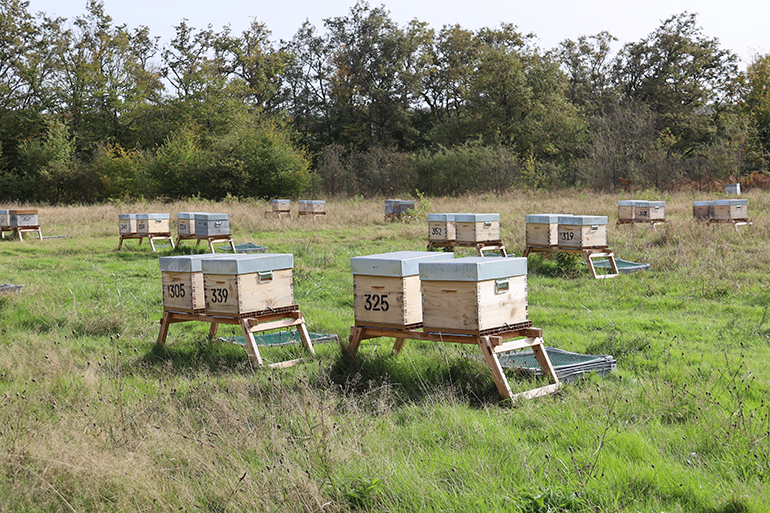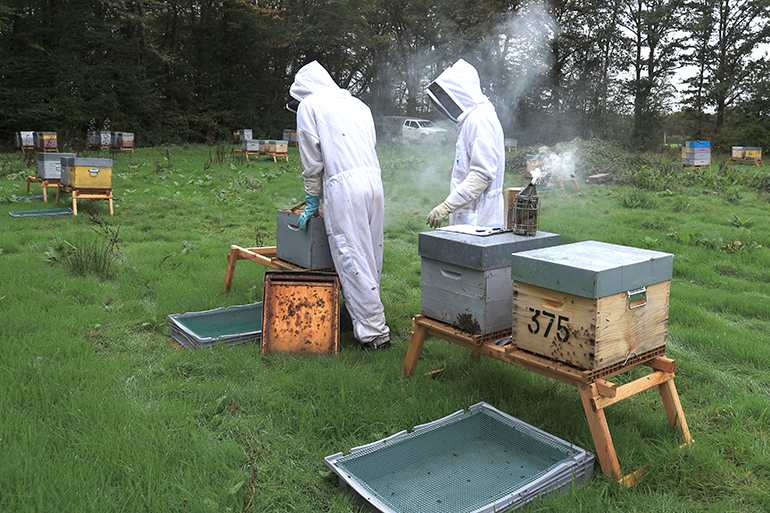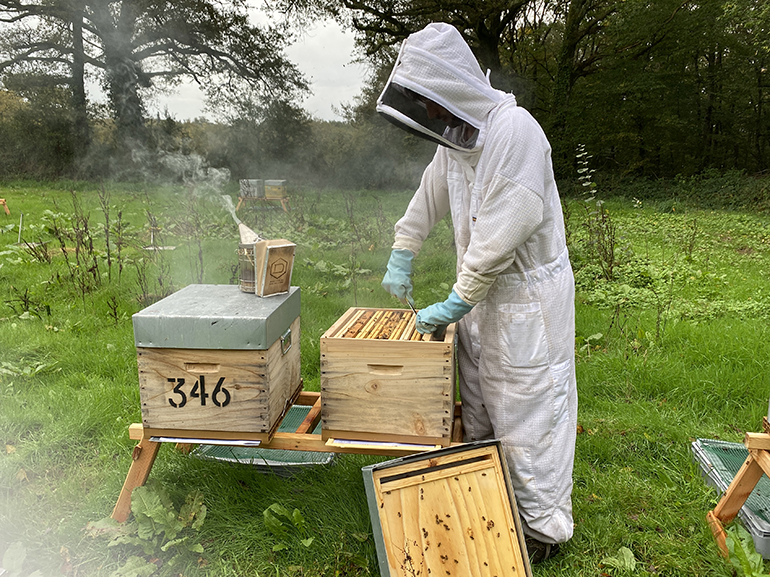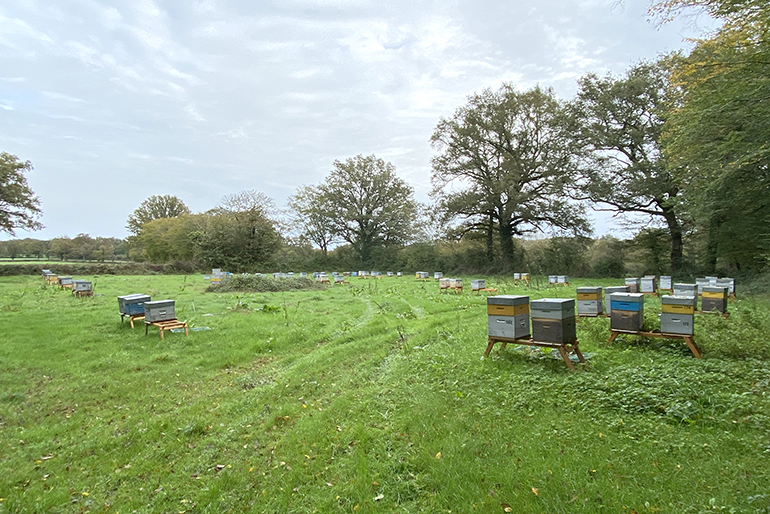 by Véto-pharma
by Véto-pharma In 2024, Véto-pharma celebrated ten years of the experimental apiary. Since its installation in 2014 with an initial stock of 100 hives, the number of colonies has steadily increased. Today, it has reached 380 colonies, a real asset for strengthening our research into innovative solutions to combat varroa mites.
Véto-pharma devotes 10% of its sales to Research and Development, with the main aim of identifying new molecules and forms of application for the registration of treatments against Varroa destructor. This essential investment aims to ensure a sustainable future for beekeeping by offering beekeepers innovative solutions to diversify their fight against this parasite.
The installation of a 100-colony apiary (Dadant) in 2014 in Chaillac (France), close to our industrial site dedicated to animal health, marked a turning point in our innovation strategy. In 2015, the opening of a research laboratory and the “Espace de Valorisation de l’Abeille“ (also called EVA, a Bee Awareness Center) strengthened our investigative capacity.

Here is our operation evolution over the years:
With this reinforced workforce, our Bee Innovation R&D team continues its commitment developing innovative solutions against varroa mites and yellow-legged hornets, as well as nutritional products.

Although our experimental apiary, now 380 colonies strong, is dedicated to R&D and not to honey production, the members of our R&D apiary team adjust the action schedule according to the seasons, just like any other beekeeping operation, in order to stay as close as possible to “field” conditions.
Although bee activity slows down in winter, our team’s activity remains intense with several essential missions:
1 – Ensuring food reserves
One of the main causes of bee winter mortality is starvation. Even if good autumn feeding has been carried out, reserves should be monitored in January-February and fondant (sugar paste) added if necessary.
2 – Preparing equipment for the new season
Winter is the ideal time to maintain and renew our beekeeping equipment:

3 – Monitoring the condition of hives
Even in the middle of winter, regular checks on the hives are essential. It’s not a question of opening the hives during periods of intense cold, but of checking certain external points:
4 – Planning the coming beekeeping season

Winter is therefore a strategic stage in ensuring that colonies recover as soon as the sun comes out. Through careful monitoring and rigorous preparation, our team ensures a dynamic and resilient apiary.
From May onwards, the team will resume its screening for new molecules activities , with the aim of offering innovative solutions to combat the varroa mite.
 by Véto-pharma
by Véto-pharma  by Véto-pharma
by Véto-pharma